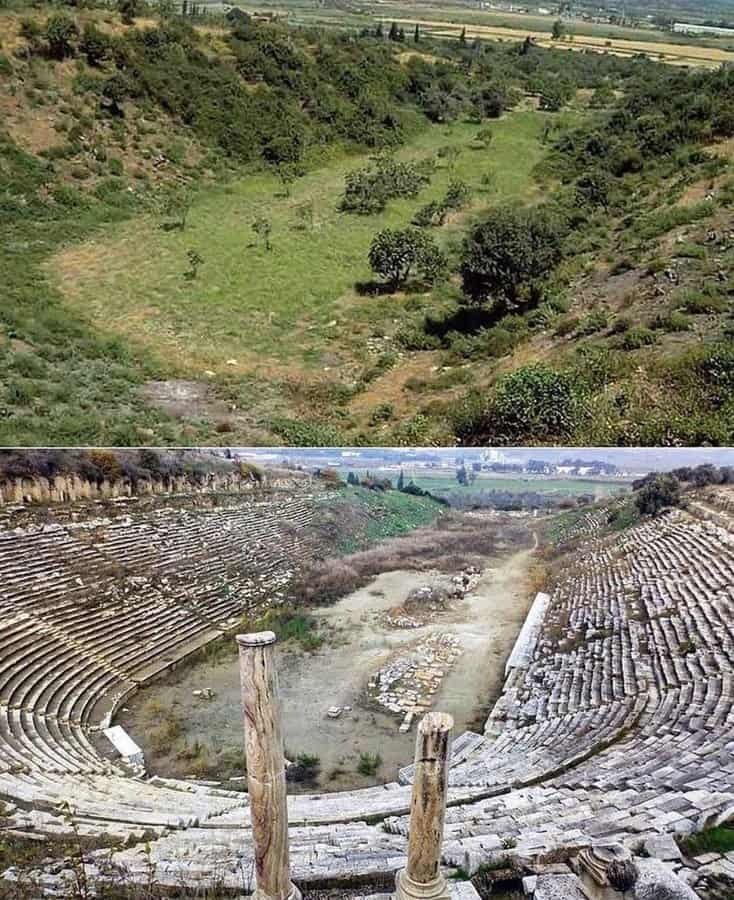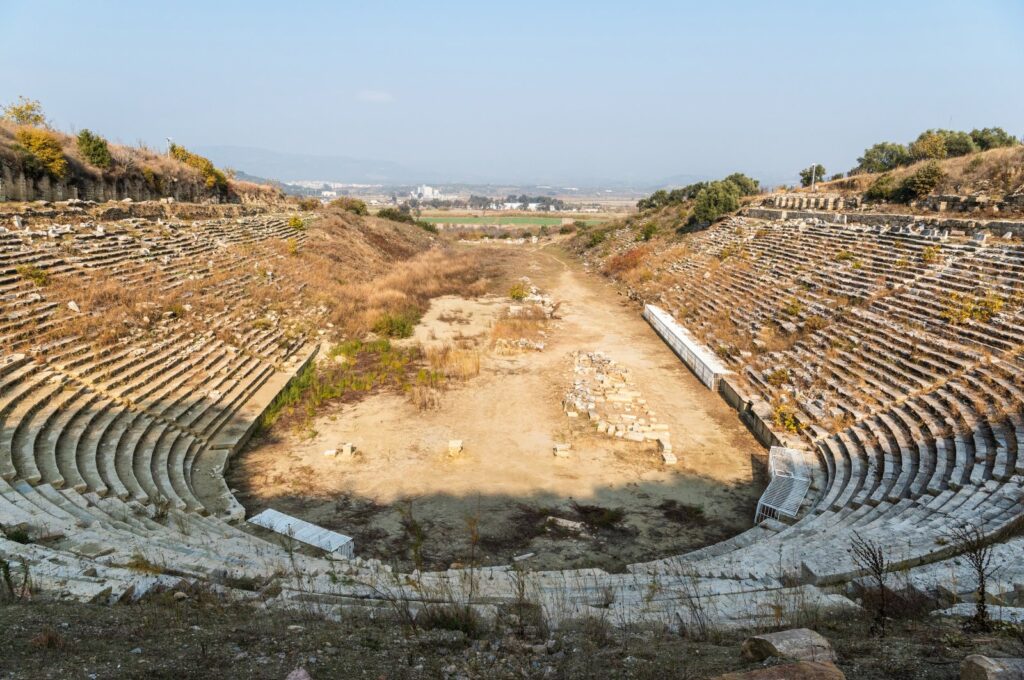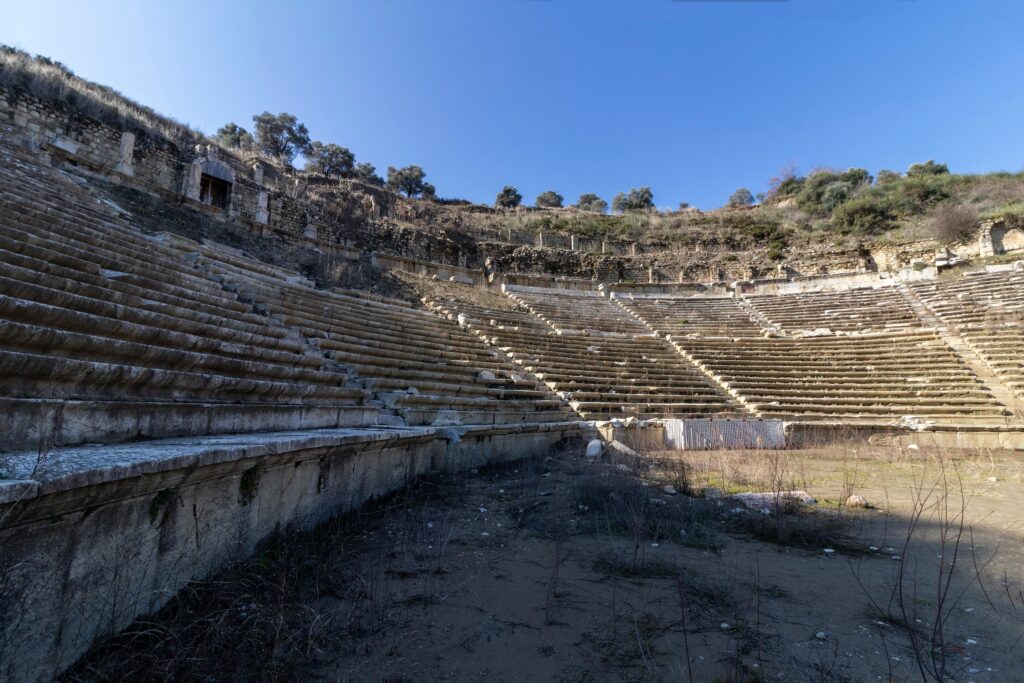
Magnesia: ‘City of races’ home to best-preserved stadium in Anatolia
The first excavations in Magnesia were conducted between 1891 and 1893 by a German archaeological team led by Carl Humann.
The work lasted 21 months and partially revealed the theater, the Artemis temple, the agora, the Zeus temple and the prytaneion (a place where government officials would meet).

In 1984, excavations were resumed at the site by Orhan Bingöl from Ankara University. Bingöl and his teams have gradually revealed the ancient stadium of the city over many years of work.
The stadium of 30,000 seats is one of the most imposing and well-preserved ancient stadiums in Anatolia. The track length of the Magnesia Stadium, which is thought to have been used until the 3rd century AD, is 189 meters.

The stadium, located in the southern part of the ancient city, features more than 150 reliefs on its arena and podium walls. These reliefs generally depict the competitors, the awards given in the competition and the types of competitions.
Interestingly, in the Magnesia stadium, which has thousands of marble benches, the rows of seats were predetermined for certain groups, similar to today’s system.


Most of the inscriptions found in the stadium show that occupational groups had special places here. Although we cannot see the solidarity of tradesmen in the stadiums today, the excavations in Magnesia revealed that craftsmen and occupational associations reserved places to watch the competitions in ancient times.

I think that there is still much to be revealed. Might be worth some aerial ground sonar techniques.
Wow!
Thank you for sharing, It is unbelievable what humains are capable of.
What a magnificent site reflecting basis of perfect engineering and architecture !
amazing—-revelation is slow, may enquiring minds prevail!
Wow, hope it’s maintained so we can visit someday,